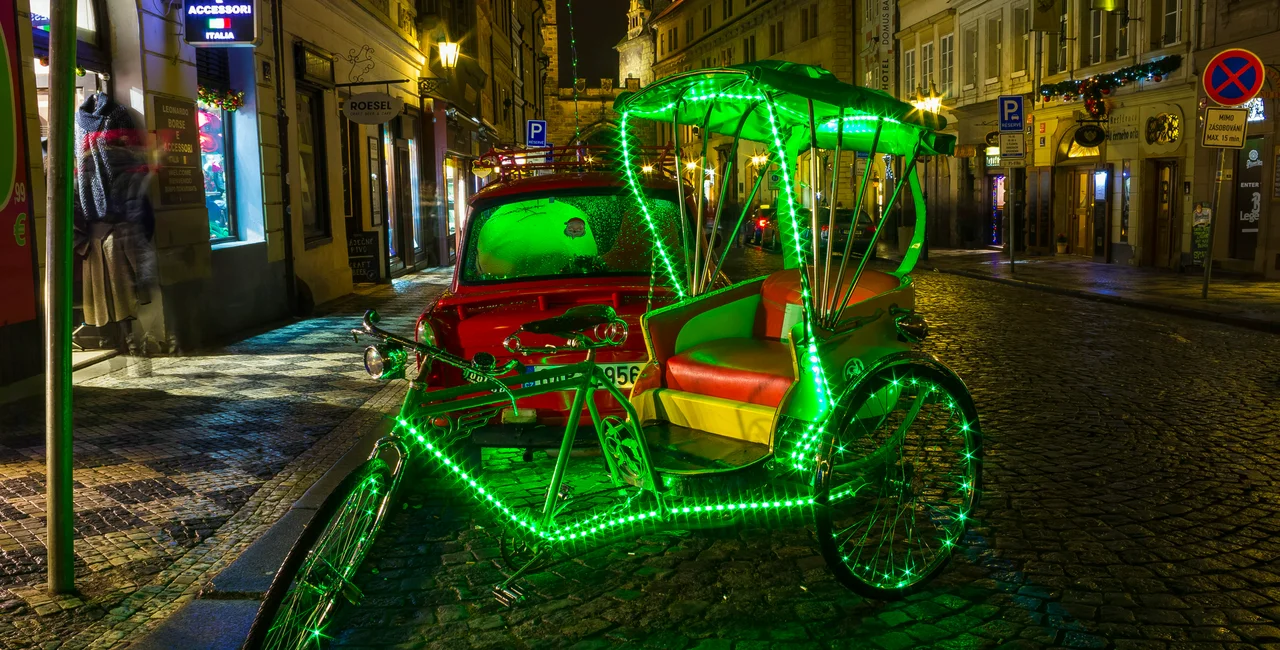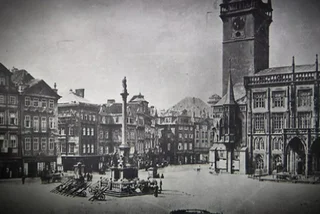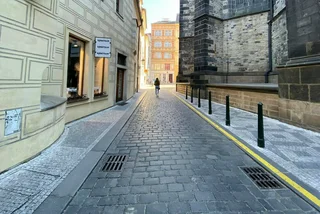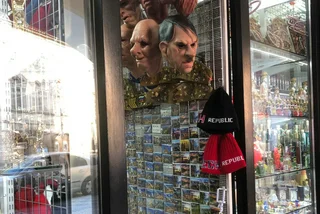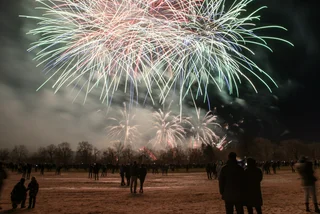When tourists return to Prague’s city center, they will see some changes. The Prague City Council approved changes to the wording of taxi regulations that will make it impossible for fake historical vehicles charge exorbitant prices, and gaudy advertising rickshaws will be gone. This follows on a series of of initiatives to remove visual smog and other disturbances.
The Prague City Council approved a method of removing unauthorized tricycles with rickshaws with illuminated advertisements from the public space in Prague’s monument reserve.
“One of the city’s long-unsolved and problematic issues is illegally placed advertising, including various objects from entrepreneurs who are trying to make their establishments more attractive. An example is the infamous rickshaws on Wenceslas Square and Old Town Square, as well as Celetná and Karlova streets,” City Councilor Jan Chabr, responsible for property management, said.
“Their removal was very complicated from the point of view of the city and almost impossible from the point of view of misdemeanor law,” Chabr added.
The city had an analysis of the law made to find a solution, and will start making use of a “self help” provision that allows people to remove objects that infringe on their rights without having to wait for the conclusion of legal proceedings. The same principal can be applied to other forms of illegal advertising in the public space such as billboards, stands, and kiosks placed in violation of market rules.
Prague Mayor Zdeněk Hřib is glad to see the advertisements go. “Unsightly rickshaws and similar carts parked on one of the oldest Czech squares or on the Royal Route have been ruining our historic center for several years. In the long run, loopholes in the law have been abused to spread this visual advertising smog. I am glad that we managed to find a way to remove this aesthetic plague from the city,” he said.
City Councilor Hana Třeštíková, responsible for culture, monument care, exhibitions and tourism, also was pleased. “Red-green rickshaws in the most valuable parts of the Prague Monument Reserve are a mockery of all Praguers. They could stand in the streets for so long only because of the leaky legislation, which makes it very difficult for Prague to make the historic core a dignified and friendly place again, not a tourist Disneyland,” she said.
“Therefore, we commissioned an analysis that suggested new ways in which the city can act. I am glad that there is a general consensus on the need for a tougher approach,” she added.
The actual removal of rickshaws with unsightly advertisements will now be ensured by the city’s Property Management Department. They vehicles will be removed repeatedly if the problem persists. Specifically, the rickshaws should disappear from in front of the buildings at the addresses Václavské náměstí 18, Celetná 9, Staroměstské náměstí 16 and Karlova 14.
Prague has previously tried to solve the situation via complaints filed with the road authority due to unauthorized use of public space and for violating rules for distributing advertising in public spaces outside the establishment.
Faux historical vehicles will be subject to taxi prices
Prague Deputy Mayor Adam Scheinherr said that the so-called historical vehicles that operate in the city center will have to follow the same price regulations as normal taxis, which is CZK 36 per kilometer. Some charge over CZK 2,200 for a one-hour tour. The vehicles, despite the claims of the operators, are modern cars with customized body work to make them resemble cars from the 1940s or earlier. They are often registered as agricultural or recreational vehicles to get around inspection laws.
“The whole business will be significantly less lucrative once tourists return to Prague. The center is not an amusement park and we promised to return it to the people. Residents live here, Praguers come here to work and Prague's interests come first for us,” Scheinherr said on Facebook.
The Prague City Council approved new wording to municipal regulations on maximum taxi fares after inspections found the rules were circumvented to charge customers higher prices.
The regulations define three types of taxi service. The standard one concerns a vehicle with a roof lamp with the word “taxi” and a meter to count the mileage. Another type involves electronic orders via an app.
Fake historical cars fall into another category, a service based on a written contract concluded before the ride. This category is intended for transporting guests at celebrations such as weddings or funerals. The vehicles did not have to be marked with a roof lamp or use a meter.
Inspections by the municipal Department of Transport found a clear trend for abusing the contractual transport rules. Inspectors found not only abuses by fake historical cars, but also by hotel taxis, where according to the city the transport performed by them has no added value compared to the standard taxi service.
The amendment to the taxi regulations better defines the types of transport services that can be concluded based on a contractual agreement.
Prague City Hall has been cleaning up the center of visual smog over the past several years by banning beggars in large animal costumes and soap-bubble shows. Other forms of busking and begging with live animals such as birds or snakes have been banned since 2016. Garish signs are also coming down under rules to unify adverting in public spaces. Beer bikes have also been banned recently, following after efforts to ban Segways in 2016.












 Reading time: 4 minutes
Reading time: 4 minutes 